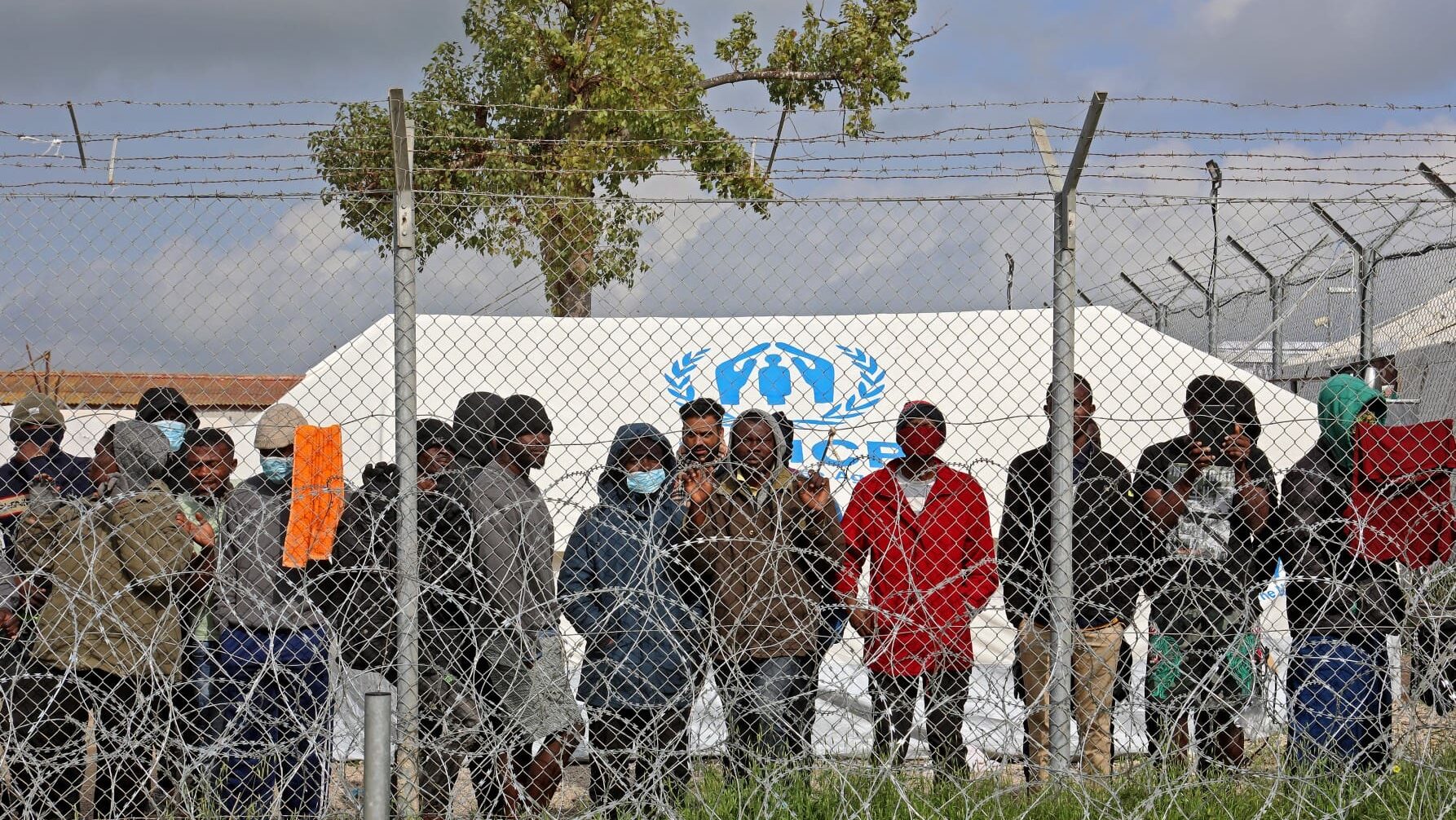
Asylum seekers in the Pournara refugee camp, outside of Nicosia, Cyprus.
Photo: Christina Assi / AFP
The European Union’s Asylum Agency’s (EUAA) annual report for 2023, published a few days ago, highlights some of the key data about the state of Europe’s asylum system, including a further increase in overall applications and a consistently low level of deportation of failed asylum seekers—as well as the failure of the so-called Dublin system.
The 321-page report, published on June 14th, concludes that the EU countries continued to host “a record number of people in need of protection” in 2023, with 1.1 million granted temporary protection during the year and an additional 1.1 million new applications registered in the same time, marking a steep 25% increase from 2022.
In contrast, deportation rates of failed asylum seekers continued to remain low. According to the EU’s border control agency Frontex, over 420,000 deportation orders were issued in 2023, but only 90,000 (or 21%) were actually carried out, which “indicates room for improvement,” the report politely notes.
The report also shows just how dysfunctional the Dublin system is—a system supposed to ensure that asylum seekers remain in the first country where they submitted their applications. If the migrants travel further into the EU, local authorities can request ‘Dublin transfers,’ and the initial countries are supposed to take claimants back.
According to the data, 176,000 such requests received positive decisions (a 72% acceptance rate), yet only about 15,000 or 8.5% of those transfers were actually followed through. This underlines what conservative MEPs have long been saying, that the broken Dublin system is incompatible with the free movement of the Schengen area.
Despite the record number of successful asylum applications, there were still 883,000 asylum seekers awaiting a decision in the EU at the end of the year—the highest since 2015, when leftover pending cases stood at 916,000 in December.
The overall recognition rate in 2023—the rate of successful applications compared to the total number of decisions—stood at 43%. The remainder of the applications were mostly rejected, but in a few cases, they were granted other, national forms of protection.
During the same period, Frontex registered 385,000 illegal entries, corresponding to an 18% increase from the year before.
“This combined total placed asylum and reception systems under extreme pressure,” the authors state, adding that “the number of asylum seekers was reminiscent of the 2015-2016 migration crisis.” However, they said the way Europe stopped referring to the phenomenon as a “crisis” may also indicate better preparedness and management than eight years ago.
Moreover, the report highlights that the majority (over 70%) of the total asylum applications were submitted in just four countries. Germany tops the chart with 334,000 (+45% from 2022), followed by France with 167,000 (+7%), Spain with 162,000 (+38%), and Italy with 136,000 (+63%).
.@EUAsylumAgency's new report: 1.1 million asylum applications submitted in 2023. That's up 25% compared to 2022 and third-highest after 2015&2016. 70% of those in just 4 countries👇Meanwhile,@Frontex
— Tamás Orbán (@TamasOrbanEC) June 19, 2024
data shows that only 21% of deportation orders were actually carried out. pic.twitter.com/hg9LSmFcy9
Relative to each country’s population, Cyprus takes the lead by far with 13,000 asylum applications per one million inhabitants. The small island nation embattled by the recent influx of Syrian refugees is followed by Austria (6,500 per million), Greece (6,200), and Germany (4,000).
Broken down by nationalities, Syria, Afghanistan, and Turkey accounted for over a third of the total applications. Turkey may not remain in third place for long, the report notes, as it registered the highest one-year increase with 82% more Turkish migrants claiming asylum in the EU than in 2022.
However, since it’s a relatively safe country, the recognition rate for Turkish migrants was only 38%, while the highest recognition rates were recorded for Syrian (94%), Ukrainian (92%), and Palestinian migrants (87%).
Despite following the same EU rules, there was also a great variation in the recognition rate of EU member states. Estonia was the only one with an average that’s above 90%, followed by Portugal and the Netherlands; while the countries where asylum seekers were the least likely to succeed were Spain, Romania, and Cyprus.
